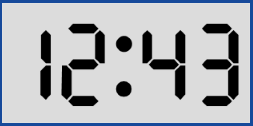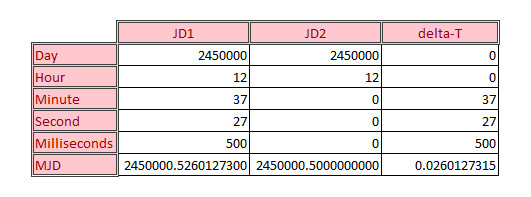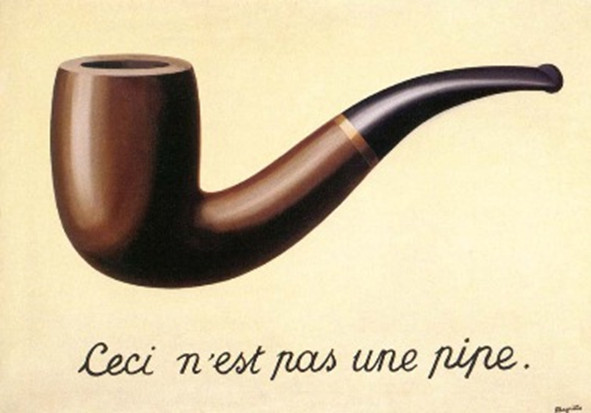Making Rational Decisions
I recently came across an interesting method for combining qualitative and quantitative data on a common footing to allow for a mathematically supported framework for make complicated decisions where many criteria are involved. The method is called the Analytic Hierarchy Process.
The Analytic Hierarchy Process (AHP), which was invented Thomas L. Saaty in the 1970s, uses a technique based on matrices and eigenvectors to structure complex decision making when large sets of alternatives and criteria are involved and/or when some of the criteria are described by attributes that cannot be assigned objective rankings are in play. It is especially useful in group-based decision making since it allows the judgements of disparate stake-holders, often with quite different points-of-view, to be considered in a dispassionate way.
In a nut-shell, the AHP consists of three parts: the objective, the criteria, and the alternatives. Criteria can be sub-divided as finely as desired, with the obvious, concomitant cost of more complexity in the decision making process. Each alternative is then assigned a value in each criterion and each criteria is given a weighting. The assessments are normalized and matrix methods are used to link the relative values and weightings to give a ranking. Graphically, these parts are usually presented in hierarchical chart that looks something like:
A nice tutorial exists by Haas and Meixner entitled An Illustrated Guide to the Analytic Hierarchy Process and this posting is patterned closely after their slides. The decision-making process that they address is buying a car. This is the objective (‘the what’) that we seek to accomplish. We will use three criteria when selecting the car to buy: Style, Reliability, and Fuel Economy.
Two of these criteria, Style and Reliability, are qualitative or, at least, semi-qualitative, whereas the Fuel Economy is quantitative. Our alternatives/selections for the cars will be AutoFine, BigMotors, CoolCar, and Dynamix.
The first step is to make assign numerical labels to the qualitative criteria. We will use a 1-10 scale for Style and Reliability. Since we are weighing judgements, the absolute values of these scores are meaningless. Instead the labels indicate the relative ranking. For example, we can assume that the 1-10 scale can be interpreted as:
- 1 – perfectly equal
- 3 – moderately more important/moderately better
- 5 – strongly more important/strongly better
- 7 – very strongly more important/very strongly better
- 9 – extremely more important/extremely better
with the even-labeled values slightly greater in shading than the odd labels that precede them. This ranking scheme can be used to assign weightings to the criteria relative to each other (for example style is almost strongly more important than reliability – 4/1) and to weigh the alternatives against each other in a particular criteria (for example AutoFine is moderately better than CoolCar in reliability).
To be concrete, let’s suppose our friend Michael is looking to buy a car. We interview Michael and find that he feels that:
- Style is half as important as Reliability
- Style is 3 times more important as Fuel Economy
- Reliability is 4 times more important as Fuel Economy
Based on these responses, we construct a weighting table
| Style | Reliability | Fuel Economy | |
|---|---|---|---|
| Style | 1/1 | 1/2 | 3/1 |
| Reliability | 1/1 | 4/1 | |
| Fuel Economy | 1/1 |
where the first number in the entry corresponds to the row and the second to the column. So the ‘4/1’ entry encodes the statement that Reliability is 4 times more important as Fuel Economy. The omitted entries below the diagonal as simply the reverses of the one above (e.g. 1/2 goes to 2/1).
This table is converted to a weighting matrix $\mathbf{W}$ which numerically looks
\[ {\mathbf W} = \left[ \begin{array}{ccc} 1.000 & 0.5000 & 3.000 \\ 2.000 & 1.000 & 4.000 \\ 0.3333 & 0.2500 & 1.000 \end{array} \right] \; . \]
In a similar fashion, we interview Michael for his judgments of each automobile model with each criteria and find corresponding weighting matrices for Style and Reliability:
\[ {\mathbf S} = \left[ \begin{array}{ccc} 1.000 & 0.2500 & 4.000 & 0.1667 \\ 4.000 & 1.000 & 4.000 & 0.2500 \\ 0.2500 & 0.2500 & 1.000 & 0.2000 \\ 6.000 & 4.000 & 5.000 & 1.000 \end{array} \right] \; \]
and
\[ {\mathbf R} = \left[ \begin{array}{ccc} 1.000 & 2.000 & 5.000 & 1.000 \\ 0.5000 & 1.000 & 3.000 & 2.000 \\ 0.2000 & 0.3333 & 1.000 & 0.2500 \\ 1.000 & 0.5000 & 4.000 & 1.000 \end{array} \right] \; . \]
Finally, we rank the fuel economy for each alternative. Here we don’t need to depend on Michael’s judgment and can simply look up the CAFE standards to find
\[ {\mathbf F} = \left[ \begin{array}{c}34\\27\\24\\28 \end{array} \right] mpg \; . \]
Saaty’s method directs us to first find the eigenvectors of each of the $4 \times 4$ criteria matrices and of the $3 \times 3$ weighting matrix that correspond to largest eigenvalues for each. Note that the Fuel Economy is already in vector form. The L1 norm is used so that each vector is normalized by the sum of it elements. The resulting vectors are:
\[ {\mathbf vW} = \left[ \begin{array}{c}0.3196\\0.5584\\0.1220 \end{array} \right] \; , \]
\[ {\mathbf vS} = \left[ \begin{array}{c}0.1163\\0.2473\\0.0599\\0.5764 \end{array} \right] \; , \]
\[ {\mathbf vR} = \left[ \begin{array}{c}0.3786\\0.2901\\0.0742\\0.2571 \end{array} \right] \; , \]
and
\[ {\mathbf vF} = \left[ \begin{array}{c}0.3009\\0.2389\\0.2124\\0.2479 \end{array} \right] \; . \]
A $4 \times 3$ matrix is formed whose columns are ${\mathbf vS}$, ${\mathbf vR}$, ${\mathbf vF}$ which is then left multiplied into ${\mathbf vW}$ to give a final ranking. Doing this gives:
| AutoFine | 0.2853 |
| BigMotors | 0.2702 |
| CoolCar | 0.0865 |
| Dynamix | 0.3580 |
So from the point-of-view of our criteria, Dynamix is the way to go. Of course, we haven’t figured in cost. To this end, Haas and Meixner recommend scaling these results by the cost to get a value. This is done straightforwardly as shown in the following table.
| Ranking | Cost | Normalized Cost | Value = Ranking/Normalized Cost | |
|---|---|---|---|---|
| AutoFine | 0.2853 | $20,000 | 0.2899 | 1.016 |
| BigMotors | 0.2702 | $15,000 | 0.2174 | 1.243 |
| CoolCar | 0.0865 | $12,000 | 0.1739 | 0.497 |
| Dynamix | 0.3580 | $22,000 | 0.3188 | 1.122 |
With this new data incorporated, we now decided that BigMotors gives us the best value for the money. Whether our friend Michael will follow either of these two recommendations, is, of course, only answerable by him but at least the AHP gives some rational way of weighing the facts. I suspect that Aristotle would have been pleased.








